.png)
Enhancing Security: A Guide to Surveillance Installation
Content Summary
Surveillance systems are essential for security in today's world. They go beyond mere observation, embodying proactive security measures. With meticulous planning, installation ensures optimal coverage and functionality. Legal compliance and maintenance are vital for effective operation. Overall, surveillance empowers individuals and organizations, making spaces safer.
Table of Contents
Enhancing Security: A Guide to Surveillance Installation
Understanding Surveillance Systems
Planning the Surveillance Installation
-
Assessing Security Needs
-
Identifying Vulnerable Areas
-
Determining Camera Locations
-
Selecting Suitable Equipment
-
Estimating Budget and Costs
Step-by-Step Guide: Installation Process
Ensuring Legal Compliance
Maintenance and Upkeep
Conclusion
FAQs
In today's fast-paced world, security concerns are paramount. Surveillance systems safeguard homes, businesses, and public areas. They play a pivotal role in security. Their significance cannot be overstated. They act as vigilant guardians, keeping watch when we cannot.
Surveillance installation goes beyond mere observation. Surveillance installation embodies a proactive security approach. It deters threats and provides crucial evidence during incidents. Surveillance installation is indispensable. It safeguards assets and ensures public safety. It's a vital tool in our modern defense against risks.
Surveillance systems empower individuals and organizations. They monitor, record, and alert. They offer control over security, making spaces safer.
Understanding Surveillance Systems
Surveillance systems are crucial for monitoring and securing various environments. They encompass a range of technologies designed for protection.
Closed-Circuit Television (CCTV) is a traditional surveillance method utilizing fixed cameras. IP cameras, on the other hand, transmit video data over the internet. Wireless surveillance systems offer flexibility and convenience without the need for complex wiring.
The components of wireless security cameras atlanta ga systems include cameras and monitoring stations. Cameras capture visual data, recording devices store it, and monitoring stations oversee operations.
Understanding these elements is vital for deploying effective surveillance solutions. They work together seamlessly to provide comprehensive security coverage. Advancements in technology drive surveillance system evolution. They offer enhanced features, and provide new capabilities.
Planning the Surveillance Installation
Assessing Security Needs
Assessing security needs is crucial for effective surveillance planning. It involves evaluating potential risks and vulnerabilities.
Identifying Vulnerable Areas
Identifying vulnerable areas helps prioritize surveillance coverage. This step ensures comprehensive security measures.
Determining Camera Locations
Determining camera locations strategically covers critical surveillance zones. It optimizes monitoring effectiveness.
Selecting Suitable Equipment
Selecting suitable equipment ensures optimal performance and functionality. It aligns with specific surveillance requirements.
Estimating Budget and Costs
Estimating budget and costs ensures cost-effectiveness and project viability. It enables proper financial planning and allocation.
This systematic approach guarantees a robust surveillance installation tailored to unique security needs.
Step-by-Step Guide: Installation Process
Installation Process requires meticulous attention and systematic execution. Pre-installation preparations involve three key steps. Thorough site surveys assess environmental factors and potential challenges. System design follows, ensuring optimal placement and coverage. Equipment procurement secures necessary components for smooth installation.
The installation procedure comprises mounting outdoor audio installation in strategic locations. Connecting wiring ensures seamless integration and data transmission. Configuring recording devices enables efficient data storage and retrieval.
Testing and calibration are essential for ensuring the system's functionality. Camera alignment optimizes surveillance coverage. Connectivity checks verify smooth data transmission. System integration ensures seamless operation across all components.
This structured approach guarantees a successful installation, providing reliable surveillance coverage. Each step is critical for achieving optimal performance and functionality. Capturing these nuances ensures a comprehensive understanding of the installation process.
Ensuring Legal Compliance
Understanding surveillance laws and regulations is paramount. It ensures adherence to legal requirements. Obtaining necessary permits is essential for lawful surveillance operation. It facilitates compliance with local regulations. Protecting privacy rights of individuals is crucial. It upholds ethical standards and fosters trust.
Maintenance and Upkeep
Regular inspection and testing are vital for system reliability. They detect potential issues early on. Cleaning and maintenance of equipment ensure optimal performance. It prolongs the lifespan of surveillance components.
Updating firmware and software enhances system functionality. It incorporates new features and patches security vulnerabilities. Troubleshooting common issues resolves operational challenges swiftly. It minimizes downtime and ensures continuous surveillance operation.
Conclusion
In conclusion, surveillance systems are indispensable guardians in our modern world. They offer vital protection for homes, businesses, and public spaces. Assessing security and legal compliance is vital. Maintenance is essential for system reliability. Understanding the intricacies of surveillance installation and operation is paramount.
With constant advancements in technology, these systems evolve to meet ever-changing security challenges. Embracing proactive approaches enhances surveillance effectiveness. Adhering to legal regulations is essential for system reliability. Ultimately, investing in robust surveillance solutions enhances safety and security for all.
FAQs
What are surveillance systems?
Surveillance systems are technologies designed to monitor and secure various environments.
Why are surveillance systems important?
Surveillance systems safeguard homes, businesses, and public areas. They play a pivotal role in security.
What steps are involved in surveillance installation?
Surveillance installation involves assessing security needs. Selecting suitable equipment is another step. Ensuring legal compliance is crucial.

Explore 0%* APR financing for your project
*0% interest is for promotional period only.






